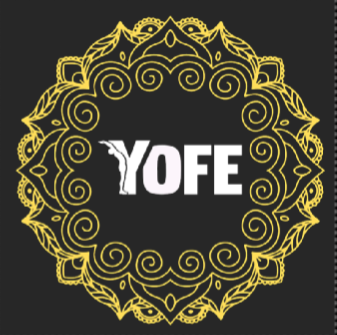The Serpent in Yoga: A Symbol of Power, Transformation and Spiritual Awakening

In yoga, symbols play a fundamental role in understanding spiritual and energetic teachings. Among them, the serpent occupies a central place, embodying powerful concepts such as transformation, healing and spiritual awakening. Whether through Kundalini, a term often associated with the serpent, or in iconic postures such as Bhujangasana (the cobra pose), this symbol is omnipresent in the practice of yoga.
In this article, let's dive into the meaning of the snake in yoga and discover why it continues to inspire practitioners around the world.
The Serpent and Kundalini : The Sleeping Spiritual Energy
The concept of Kundalini is perhaps the most famous association of the serpent with yoga. In Sanskrit, Kundalini literally means "coiled," which refers to the image of a serpent coiled at the base of the spine. According to yogic philosophy, Kundalini represents a dormant spiritual energy, coiled at the base of the spine, waiting to be awakened.
What is Kundalini Awakening? Kundalini awakening is considered one of the key moments in the spiritual path. When this energy awakens, it rises up the spine through the chakras , or energy centers, to the top of the head (the crown chakra). This rise is often associated with higher states of consciousness, an increased perception of oneself and the world, and a deep sense of spiritual connection. We have an article that explains Kundalini yoga in more detail.
Why a snake? The snake is a perfect symbol to represent this energy because of its ability to shed and regenerate. In the same way, the awakening of the Kundalini symbolizes a process of transformation and spiritual rebirth. The coiled snake represents infinite potentiality, ready to unfold to awaken the individual to his or her true nature.
The Serpent as a Symbol of Transformation and Healing
In many cultures, the snake is a symbol of transformation . This comes from the snake's ability to molt, that is, shed its old skin to reveal a new one. This natural process is often seen as a metaphor for personal transformation, a central theme in yoga.
The Snake and Shedding: A Process of Rebirth Just as a snake sheds its skin to grow, yoga invites us to leave behind our old habits, limiting thoughts and negative energies to evolve into a more authentic and fulfilled version of ourselves. The practice of yoga, through postures, meditation and pranayama (breathing exercises), can help us to "mute" on a spiritual level.
The Serpent and Healing The serpent is also often associated with healing . In Greek mythology, the caduceus , a symbol of medicine, depicts two serpents coiled around a staff. Similarly, in yoga, the serpent symbolizes healing not only of the physical body, but also of emotional and spiritual wounds. By connecting with the energy of the serpent, one can embark on a journey toward self-healing and inner balance.
Cobra Pose ( Bhujangasana ): A physical expression of the serpent
Cobra pose, called Bhujangasana , is an iconic yoga posture that mimics the majestic rise of a snake, ready to attack or defend itself. Physically, this pose is a back extension that strengthens the spine and opens the chest. But it goes far beyond the physical aspect.
Bhujangasana and the Opening of the Heart When you practice Bhujangasana, you are invited to open your heart and anchor yourself firmly to the ground, just as a snake extends and straightens with grace and power. This posture can symbolize the awakening of the Kundalini, where energy begins to rise through the spine, bringing with it strength, vitality, and a new sense of self.
The Symbolic Aspect Taking the form of a cobra reminds practitioners that spiritual awakening requires deep rooting and a connection between the earth (our physical energy) and the sky (our spiritual energy). Bhujangasana is therefore a beautiful metaphor for this quest for balance.
Learn more about the cobra pose
The Serpent in Yogic Mythology
In Hinduism, snakes are also important figures. For example, we find the god Vishnu, often represented lying on a giant thousand-headed snake called Shesha , floating peacefully on the cosmic ocean. This snake symbolizes infinity, eternity and stability.
Another example is the Ananta serpent, which means "endless", representing the cyclical nature of the universe , where every ending is a new beginning. These symbols reinforce the idea that the serpent carries an ancient and infinite wisdom, essential to understanding the great mysteries of life and spirituality.
How to Integrate Serpent Energy into Your Yoga Practice
Here are some ideas for inviting the serpent symbol into your daily practice:
- Kundalini Meditation : Take a moment to meditate on the rising of Kundalini energy through your chakras. Imagine the serpentine energy spiraling up through your body.
- Practice Snake Poses : In addition to Bhujangasana, other poses like Salabhasana (the grasshopper) or Dhanurasana (the bow) can strengthen your spine and energy center.
- Transformational Intention : Use the snake as a symbol of transformation. With each practice, let go of what no longer serves you and welcome new opportunities to grow.
The serpent, as a symbol in yoga , embodies power, transformation, and spiritual awakening. Whether through the Kundalini energy or in postures like Bhujangasana, it invites us to embrace our transformative potential and connect with a deeper wisdom. Yoga, with its ancient symbols and powerful practices, is a fascinating avenue to explore our personal and spiritual evolution.
So, the next time you roll out your yoga mat, remember this age-old symbol and let the serpent accompany you on your path to transformation and inner awakening.


















